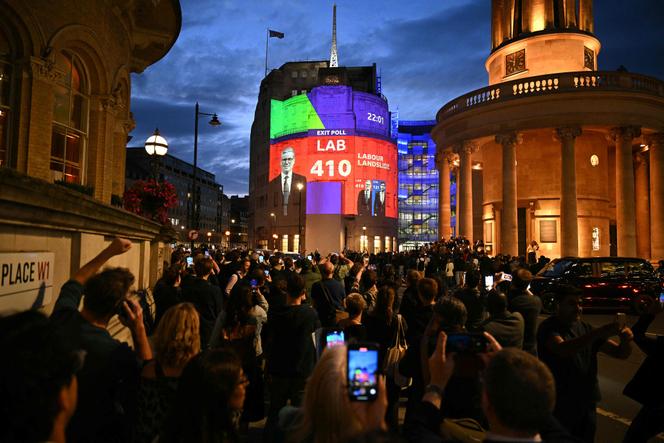
On Thursday, July 4, the political landscape in the UK changed dramatically when the Labour Party won a landslide victory, bringing to an end 14 years of Conservative rule. On Friday morning, Labour leader Keir Starmer (61) was sworn in as Prime Minister for the 58th time.Number He becomes Prime Minister of the United Kingdom, the fifth man from a left-wing party founded in 1900 to lead the opposition in Downing Street, following Ramsay MacDonald, Clement Attlee, Harold Wilson and Tony Blair.
The tsunami of “red” (Labour’s colour) including traditional “red wall” constituencies – the under-industrialised areas of central and northern England that voted to leave the EU in 2016 and for Boris Johnson in 2019 – is all the more remarkable given it came after the UK’s devastating defeat in the 2019 general election, its worst since 1935.
With at least 410 MPs elected (a House of Commons majority is 326), Labour and Starmer’s victory — Starmer, a decorated lawyer who entered politics only nine years ago, was re-elected Thursday in his central London constituency of Holborn St. Pancras — makes it as historic as Blair’s victory in 1997, though under very different circumstances. Blair came to power on popular fervor, and New Labour delivered a message of modernity to a country and a continent at peace that was still optimistic about the future. This year’s election campaign was marked by a lack of enthusiasm and confidence among British voters.
Notably, even if Starmer campaigned on a centrist manifesto like his predecessor 30 years ago, he avoided bold moves, modestly promising a return to “stability” without significantly altering Conservative policy on immigration control or fiscal orthodoxy. In his victory speech early on Friday, Starmer said Labour was “ready to serve the country, ready to restore Britain to a country that serves workers”.
Voters primarily punished the Conservative government for its troubled years in power, during which British incomes stagnated, public services and social security were undermined by extreme austerity measures, and Brexit left Britain isolated on the international stage and less economically attractive.
With fewer than 120 MPs – nearly 250 fewer than in 2019 – the Conservatives suffered their worst defeat since 1906, when they could only defend 156 seats against the Liberal Democrats, who were the main opposition party. The careers and political ambitions of many leading Conservative figures were cut short on Thursday night.
Farage’s successful gamble
The obvious symbol of this disastrous election for the Conservative party is Liz Truss, 56.Number Theresa May, who is ousted from Downing Street in October 2022 after becoming the shortest-serving prime minister in British history, lost her seat in Norfolk. She is not the only big name to fall: Defence Secretary Grant Shapps also lost his seat, along with his education colleague Gillian Keegan and the Speaker of the House of Commons, Penny Mordaunt. Meanwhile, Rishi Sunak, who was handily re-elected, conceded defeat for the Conservatives early on Friday. “I take responsibility for losing our seats,” the outgoing government leader said. The question is whether he will remain leader of the Conservative Party for long. The far-right former interior minister, Suella Braverman, who for months made no secret of her desire to succeed him as prime minister, was also re-elected and will be able to have a say in any possible restructuring of the party.
You can read 51.34% of this article. The rest is available to subscribers only.

